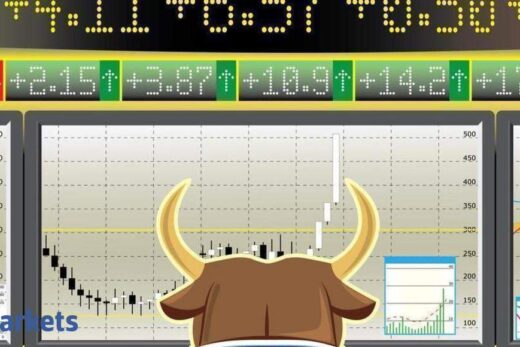1) The ‘correction’ trap
Or rather the ‘let me wait for a correction’ trap. We have often seen that investors and advisors, more particularly so in the last 12 months, have tended to wait for a correction and in turn have missed out on a lot of opportunities. It is important to realize that corrections are a part of a natural process of stock market behaviour and indeed human behaviour. Corrections will thus always happen; they are normal and there is nothing special about them.
Waiting for a market correction requires an investor to make not one but two improbable decisions: a) timing the correction and fall in markets and b) timing the bottom and rise in markets.
Thus, we think it is not advisable to wait for a correction and try to time the markets, especially in the context of India’s structural growth. The answer lies in having a sufficiently long enough holding period in the markets that makes waiting for a correction pointless.
We have studied Nifty 50 returns for the last 28 years, on various time horizons – from 1 Day to 10 years – on a daily rolling basis. Investors with a shorter holding period will always have a higher probability of facing negative returns. As the holding period elongates, the probability of negative returns falls sharply, going down to near zero for a > 3-year holding period.
As one crosses the 3-year holding period threshold, the probability of facing a >10% negative return, falls to zero. Also, as one crosses 1 year holding period, then the probability of having a >10% return, rises to beyond 50%.
Another way of tackling the correction trap is to invest in tranches, so effectively achieved by SIP investors over the past few years. This allows one to participate and at the same time take advantage of corrections, if any.
India’s narrative is changing, and it is changing fast and for the better. As long as growth is visible and sustainable, market returns will follow. You got to be ‘in’.
This is the reason, we at Avendus Olivo PMS do not take cash calls and are nearly fully invested once we complete the portfolio construction phase.
2) The ‘definition’ trap
Investors often get trapped in definitions. The most common one is the ‘market cap’ trap in asset allocation decisions. Will large cap outperform midcap or will small cap do better?
We think investors should focus on the underlying business rather than the size of the market cap of a business. No two mid-cap or small-cap businesses are similar except for the fact their market cap size belongs to a similar range. While herd mentality does lead to aberrations in the short run, ultimately it is the underlying business that leads to stock performance and not the size of the market cap.
Our analysis for the last 5 years shows that there is a nearly 1/3rd chance that a large-cap stock does better than an outperforming mid-cap index and vice versa.
At Avendus Olivo PMS, we are market cap agnostic as we find several attractive opportunities across market cap ranges especially given that India’s market breadth and depth have widened over the last few years. Liquidity considerations, though, require us to maintain a balance between large, mid, and small-cap businesses. We are thus a multi-cap strategy.
Another definition trap is the ‘style trap’ i.e. ‘value v/s growth’. We think value is not a statistical measure. The low valuation in a ‘Value’ stock could be reflective of an inferior business with a low growth outlook. Thus, a low statistical measure in terms of the P/E ratio may not necessarily be reflective of an attractive investment opportunity. Similarly, a high valuation in a ‘Growth’ stock could also be reflective of strong confidence in the growth outlook of a business’s cash flows. Therefore, a high statistical measure in terms of P/E ratio
may not necessarily reflect an unattractive investment opportunity. There is always a thin dividing line. A growth stock can be a ‘value’ bargain if the business continues to surprise positively on the growth front. At the same time, a value stock can start delivering on higher growth. A ‘change’ in business fundamentals is what is required. i.e. Financial Physics.
3) The ‘quality’ trap
A good business and a good stock need not be the same thing. It all depends on the price at which you buy the stock of a good business. In the past few years, we have seen many instances where investors have gotten carried away by high-quality businesses but have been disappointed due to high valuations which do not leave much room for upside. Similarly, a bad business is also not worth buying even at bargain valuations.
To summarize, corrections will always come. The definitional and quality traps will remain in the markets. But it is important to focus on the long term where stock market returns are generated purely and ultimately by underlying businesses i.e. their earnings growth + dividends and the price which one pays.
As Morgan Housel writes in his recent book ‘Same as Ever’, some things never change in this changing world.




